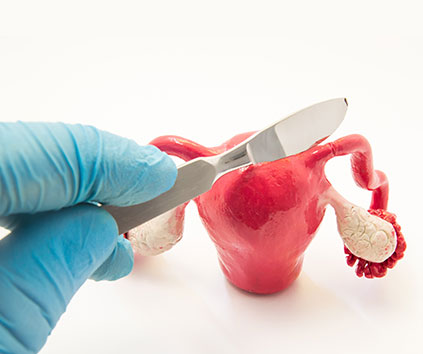
Laparoscopy In Infertility & Gynaecology
Laparoscopy In Infertility & Gynaecology
Laparoscopy is a minimally invasive surgical technique where small cuts are made on the abdomen and then it is distended with gas. Then the laparoscope, a long, thin tube with a high-intensity light and a high-resolution camera at the front is inserted through an incision in the abdominal wall. As the Laparoscope moves along, the camera relays images to a video monitor. This in turn allows the surgeon to see inside the abdomen to evaluate the uterus, tubes and ovaries real time and perform the needed surgery with ease.
The main advantage of Laparoscopic Surgery or Key Hole Surgery Treatment is that it ensures quicker recovery and facilitates early discharge from the hospital. In addition, it is also less painful and ensures lesser adhesions (scar tissue) in the abdomen.

At our center, we have the requisite preoperative, operative and postoperative support and care for ensuring the best of laparoscopic surgery in Hyderabad. Apart from this, the laparoscopic surgeons are skillful and can handle even the most advanced laparoscopic surgical techniques while providing the highest level of quality care for laparoscopic surgery.